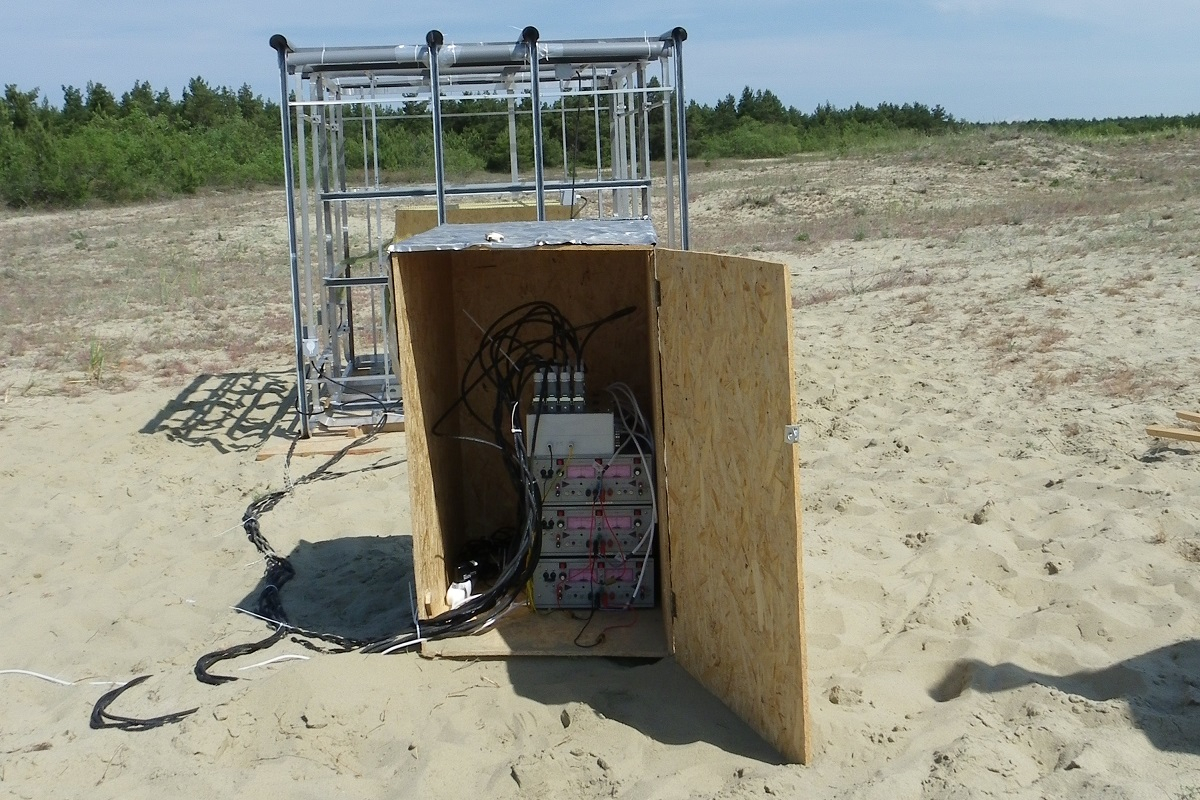Natural navigator: How birds navigate by sensing the Earth’s magnetic field, scientists discovered
The international group of scientists has discovered that migrating birds can measure magnetic declination to identify their position. The discovery sheds light on the secrets of their amazing navigational skills to identify the longitude that haven’t been fully understood yet, and it is a real breakthrough in research of animal navigation. The research findings are published in the “Current Biology” and its first author is SPbU’s Prof Nikita Chernetsov.
Migrating birds can cover thousands of kilometres in their annual travels unerringly finding their destination and returning back to their summer habitats which are of about 1-3 kilometres. The scientists discovered that bird could navigate as they could get compass information and had a sort of the ground maps. The compass is not a mystery any more, as the birds are thought to combine several different types of senses when they navigate. Birds can get compass information from the sun, the stars, and by sensing the Earth’s magnetic field. How the navigation map works is not fully understood yet.
“Presumably, there are two possible answers, among numerous others: birds sense smells and magnetic field. As the Earth’s magnetic field cannot provide accurate navigation, and the birds travel with little deviation, we can assume that both sense of smell and magnetic field play a role. They cover the most part of the course by sensing the Earth's magnetic field, and while covering the final stretch by sensing smell”, — explained SPbU’s Prof, Director of the Biological Station “Rybachy” of the Zoological Institute of RAS Nikita Cherentsov.
Many animals sense the Earth’s magnetic field to identify North Pole and South Pole, that is animals can tell latitudes, or north-south direction, they, however, cannot tell longitudes, west-east direction, using cues from the Earth's magnetic field. So, the “longitude problem” has not been solved in science yet. Bearing in mind that birds get information about magnetic and geographical north from three compass systems, the scientists believed that birds could measure the declination between them, thus identifying the longitude. Still, it has not been scientifically proven so far.
SPbU’s Prof Nikita Chernetsov and his colleagues carried out a number of experiments with adult and young specimen of Eurasian reed warblers (birds that nest in the Baltics and migrate to move to nonbreeding (winter) grounds in West Africa) “During the migration period, birds are so eager to move that even when at a cage it jumps in the direction of its migration patterns. During the experiment at Curonian Spit (Kaliningrad region), we set the birds in special circle arenas where they demonstrated that they are eager to move south-west, that is their winter grounds”, — said the scientist.
Then the biologists changed the direction of the magnetic field by using special devices in the laboratory. “With the magnetic intensity and magnetic inclination remaining the same, magnetic north was rotated 8.5° anticlockwise. If birds use magnetic declination as part of their map, this manipulation is equivalent to a virtual displacement to southeast Scotland, thousands kilometres from the Baltics. The birds, trying to compensate for their virtual magnetic displacement and return to their normal migratory route, turned south-east”, — explained Nikita Chernetsov.
Interestingly, young inexperienced migrants were disorientated by the “loss” of the north, which meant their skill to measure declination is not born, but they have to acquire it. Thus, the scientists have proven for the first time in history that birds can measure the difference between magnetic and geographical north and use it to identify their position at the migratory route.
The result is true to one specimen, and now it is necessary to understand whether it is true to other migrating birds, says the expert. The idea is that now we can prove that this mechanism works while birds migrate. “Besides, it was universally acknowledged that map and compass are absolutely different means of navigation. We, however, revealed that one of the map components consists of two compasses, and the map itself is not strictly magnetic, rather magnetic-astronomical”, — added Prof Chernetsov.
The discovery is a real breakthrough in research of animal migration, which is at the forefront of biology for several reasons. First, the specimen living in several regions are likely to be more vulnerable. If we want to preserve biodiversity, we have to study how and where animals migrate and save them within their habitats. Finally, if we understand navigation mechanism in nature and reproduce it, we will develop an alternative system to the global navigation, which would be more accurate and satellite-free.
Learn more at Migratory Eurasian reed warblers can use magnetic declination to solve the longitude problem in the Current Biology.



